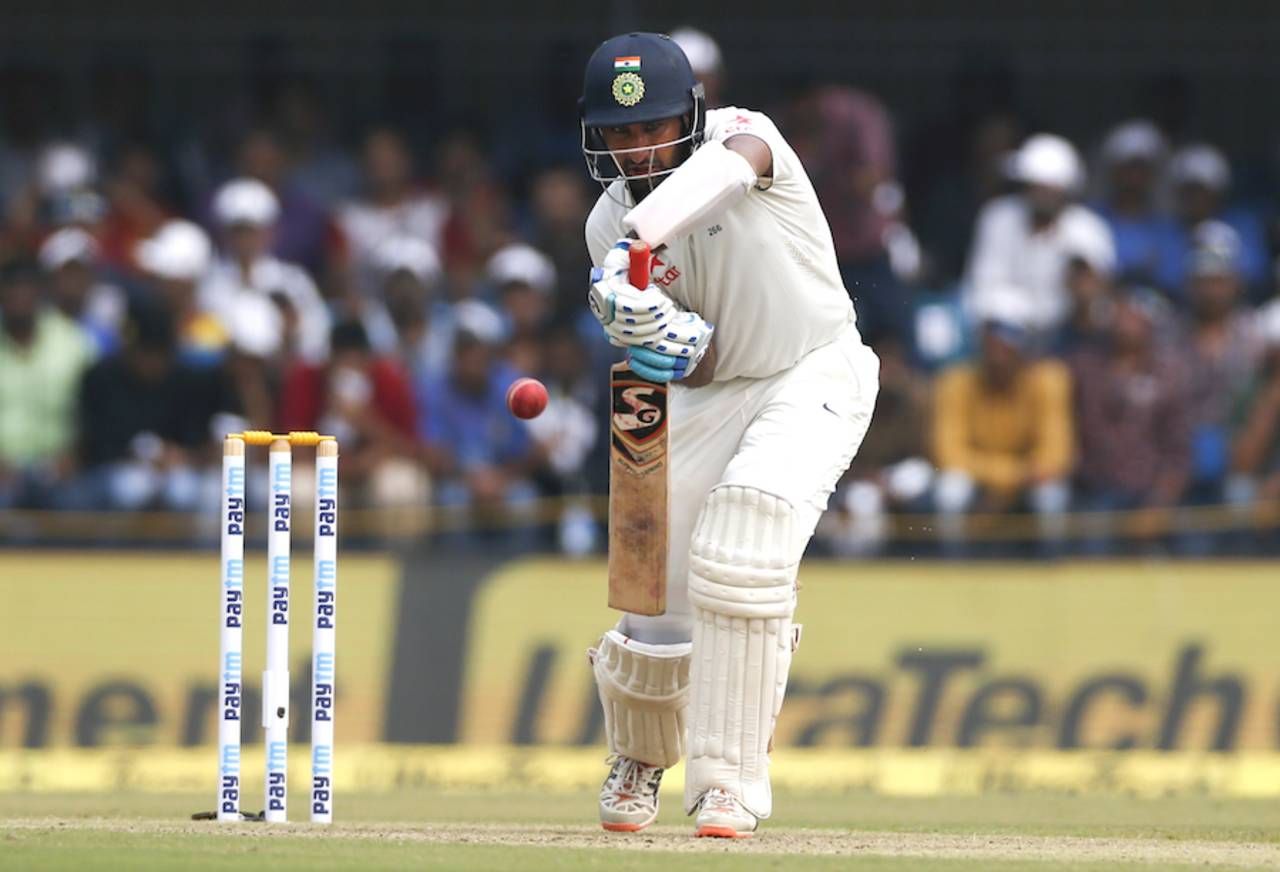Pujara's minor change against Santner
Mitchell Santner got the better of Cheteshwar Pujara in the first innings: the batsman's front-foot stride was non-existent and therefore a little spin from the pitch was enough to beat the outside edge of his bat to hit the off stump. In the second innings, Pujara's front-foot stride became a lot longer. Batting is at its easiest when you're just reacting to the ball but that mustn't overshadow the importance of the adjustments a batsman makes overnight, and how he keeps these things in mind without allowing it to interfere in his natural reaction to the ball.
When not to call for a run
The fundamentals of calling while running between the wickets is that the call belongs to the person who has the full view of the direction in which the ball has gone. Largely, it's the striker's call whenever the ball is in front of the stumps and it's the non-striker's call when the ball goes behind the stumps. It's a little different in reality; a lot depends on knowing your own and your partner's speed of running. In addition to that, you must know when your partner is likely to react and when he won't. For example, Gautam Gambhir is someone who drops and runs frequently but he will also fall back if his partner declines a run; players who don't know him take his initial burst as a firm intent for taking a run. M Vijay's dismissal today, after his mix-up with Pujara, was another such example of how your right to call an existing run doesn't matter if your partner isn't keen.
Test cricket is ruthless. Once a problem has been spotted, trust the opposition to keep targeting the same spot. Ever since Tom Latham got out lbw when Mohammed Shami went around the stumps, India's fast bowlers have tried the same ploy with the new ball. It worked again in the second innings in Indore. The most common observation on his dismissal would be that his front foot went across and therefore the bat had to come across the body, which resulted in missing the line of the ball. But the fact is that the positioning of his head in his batting stance while getting ready to face the ball is getting him in trouble. The moment the head falls towards off, the way it's happening currently with Latham, the front foot automatically falls across.
Guptill and Williamson's change in tactics
Post the dismissal in the first innings of the Kanpur Test, Martin Guptill has planted his foot a lot straighter and averted the lbw threat. The flip side was that while his foot was going straight, his conditioning didn't allow him to change his judgement of where the off stump was. On a couple of occasions he left the ball outside off without covering the stumps. It happens.
The same thing happened with Kane Williamson. To negate the lbw threat against R Ashwin, he started standing on an off-stump guard. Although that would lead to impact outside off, the flip side of this move was that the balls you feel are sliding down the stumps are actually finishing within. Williamson was lbw by Ashwin after being struck in front of middle and leg by a vicious offbreak.



